We all want to keep up with new trends and update appliances where we can. The retractable fan is a great way to keep your home both cool and aesthetically pleasing. It is also great for smaller rooms with limited ceiling space.
Understanding how a retractable ceiling fan works will help you understand how to use it and how to clean and maintain it. Below is a detailed but simple explanation of how these ceiling fans work as well as the benefits and downfalls they come with.

Retractable ceiling fans are designed with a passive pivot mechanism. The centrifugal forces at a certain speed open the blades. Overextension is prevented with a post and shelf system. Retraction is achieved through a spring biasing system. Extension/retraction speed is controlled with hydraulic arms.
Electricity Powers the Blade Rotation
Like any other standard ceiling fan, retractable fans are powered by an electrical motor, which causes the rotor to spin. The blades that are connected to this rotor spin simultaneously—again, just like any other fan.
No extra power supply is needed to open the blades up from or return them to their retracted position. The blades on retractable ceiling fans extend once a certain rotational speed has been reached, and they retract again when the fan slows below this point.
Blades Designed to Move Air in the Traditional Way
Just because the fan blades are retractable doesn’t mean that the way in which they produce airflow is different. Once the blades are extended, they act in the same fundamental way as a regular ceiling fan and are typically as effective.
The blades are pitched, which allows them to scoop air in a particular direction, depending on if the high or low side of the pitched blade is leading the rotational movement.
When rotating counterclockwise (summer mode), the highest point of the pitched blade leads the rotation and air is pushed down in a column beneath the fan.
When rotating clockwise (winter mode), the lowest point of the pitched blade leads the rotation and air is pulled upward.
Blade Extension/Retraction Mechanism
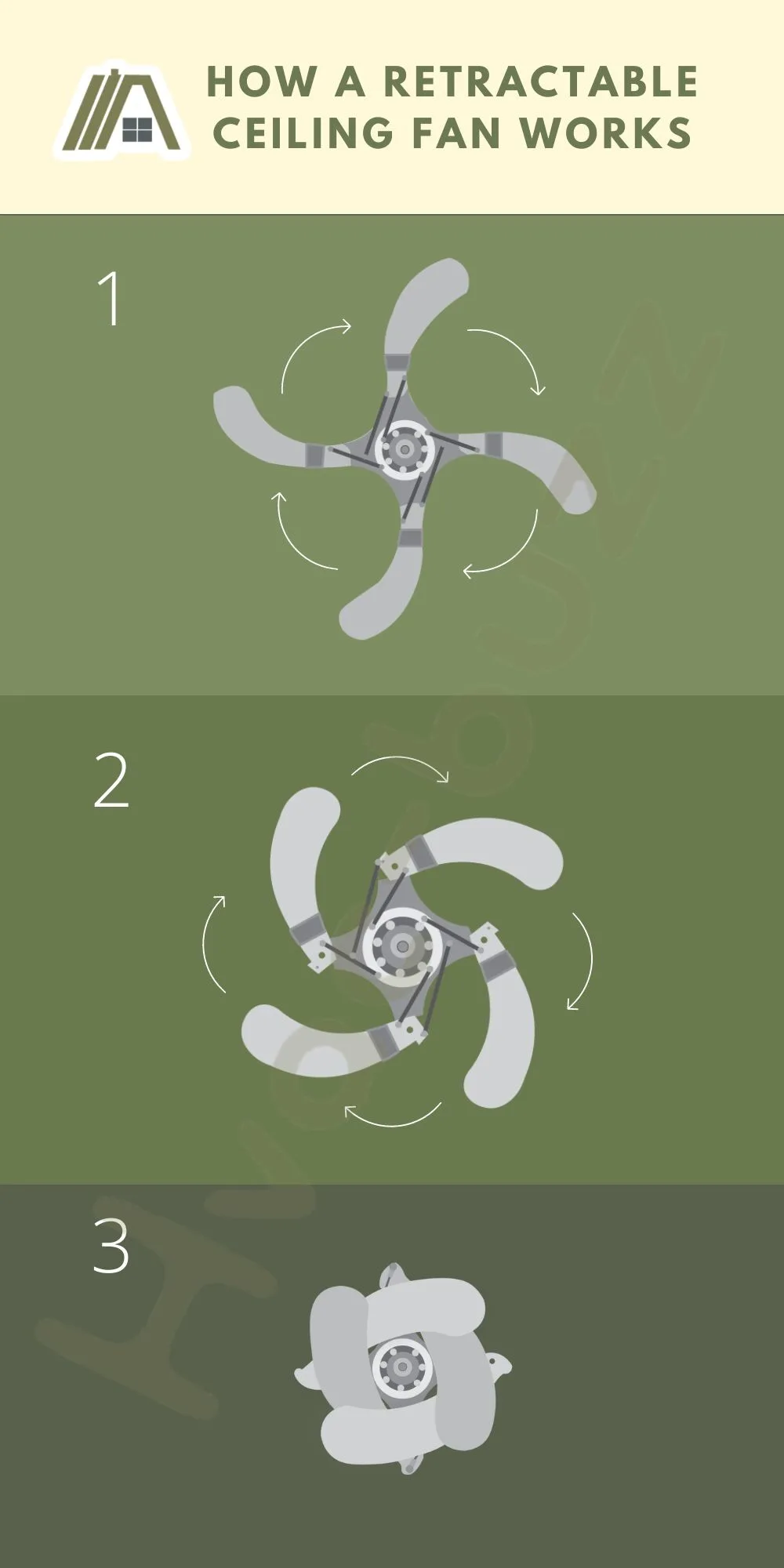
Blade Connection
All of the retractable blades are connected to a rotor, which is positioned around a free-floating center ring. An electric motor drives the spin of the rotor.
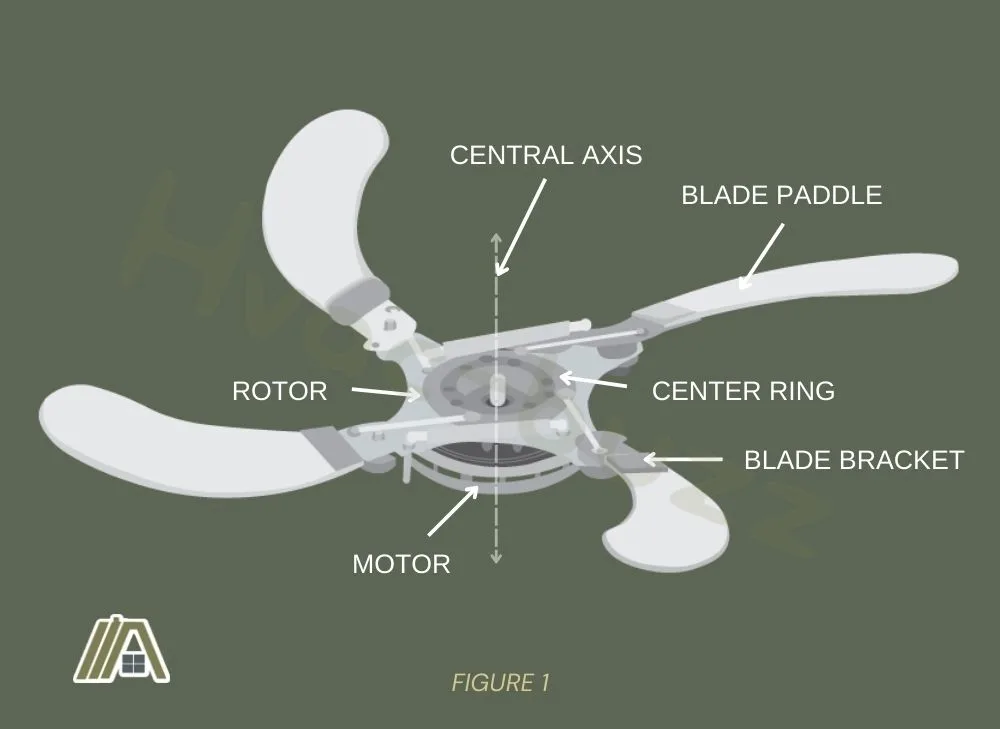
The blade paddle is fastened to a bracket, which is, in turn, attached to the rotor by means of a bolt. This bolt is secured with a lock nut and provides a pivot point for the fan blade, allowing it to smoothly extend out when the fan reaches a certain speed.
Pivot Mechanism
The pivoting action is achieved because, in addition to being attached to the rotor, the blade is connected to the center ring by a connecting rod.
On the blade bracket, this rod is fastened on the same side as the inner curve of the blade, so if it is pushed up, the blade opens, and if it is pulled ‘down’, the blade folds closed.
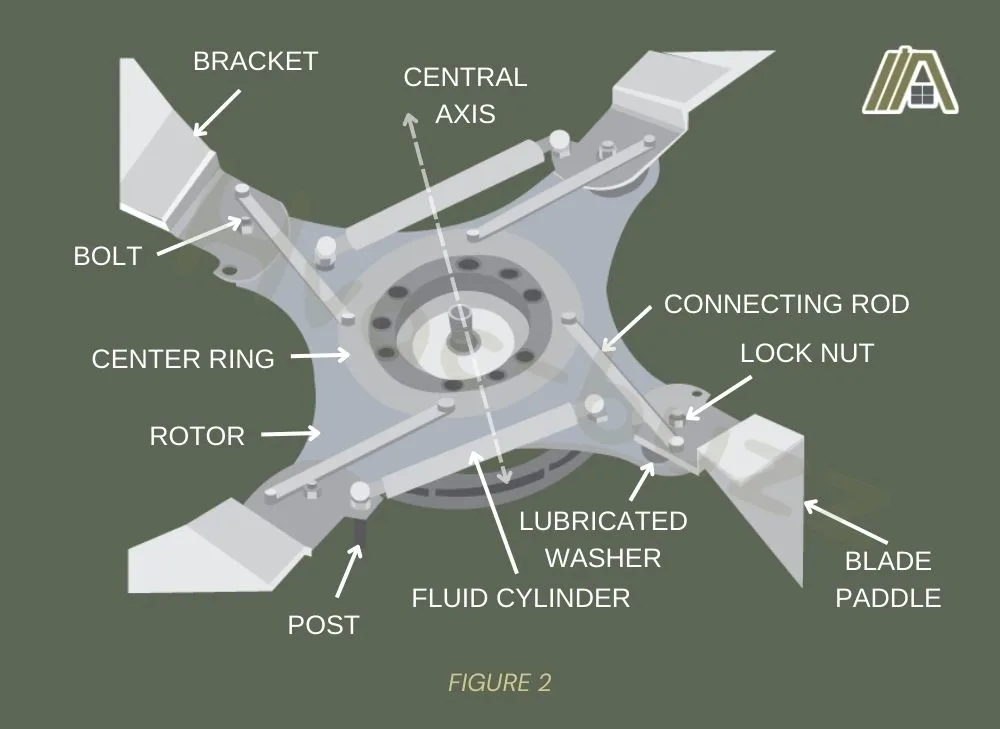
All the blades are connected to the center ring, so when one is pushed up or pulled down, the others are pushed up or pulled down as well.
The center ring is free-floating, which means that it can move independently of the rotor.
The smoothness of the pivot is aided by a friction-reducing mechanism (lubricated washer) between the blade bracket and the rotor.
Blade Extension Control
When the electric motor is switched on, it rotates the rotor. This rotation creates centrifugal forces that act on the fan blades causing them to branch out or pivot out simultaneously away from the central axis of the fan.
A certain speed has to be reached for centrifugal forces to be strong enough to push the blades out. When they do, they tend to ‘pop’ open rapidly.
How far and how quickly the blades extend outwards depends on the speed of the rotor and the fluid cylinders of each fan, which we will get into more detail in a moment. First, let’s look at the anatomy of the control mechanism.
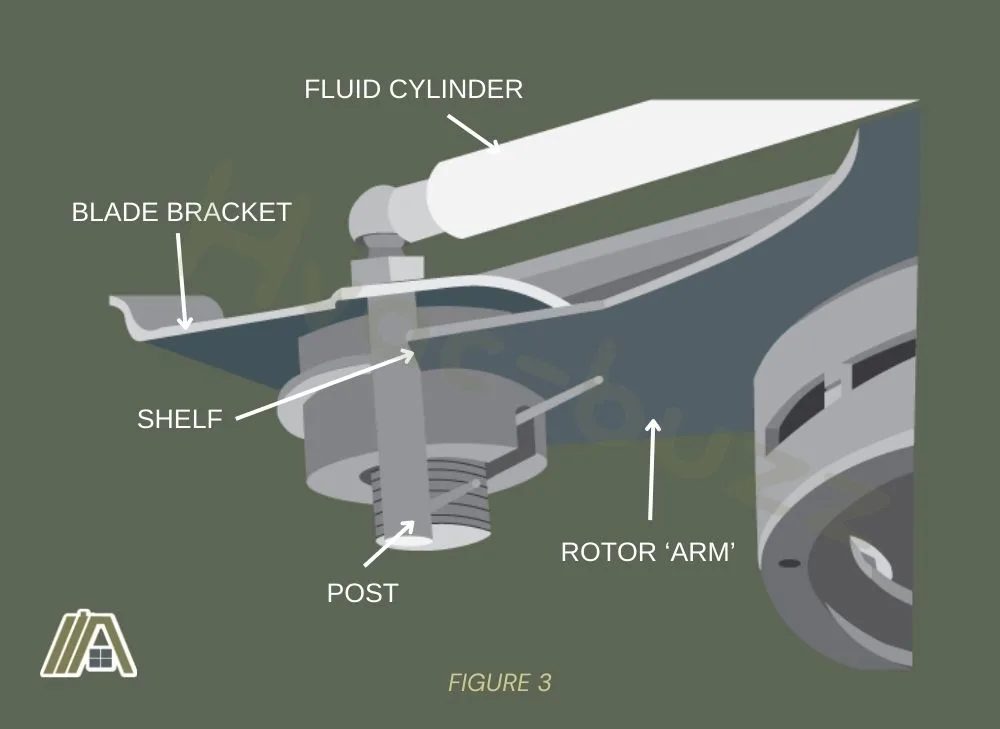
A fixed post extends downwards through the lower portion of the fan blade bracket. The blade does not overextend due to the fixed posts being pressed against a shelf on the rotor. As the blades extend out, the post presses against the shelf, preventing it from pivoting further.
The posts are connected to one end of fluid cylinders, the other end is connected to the next arm of the rotor. There are only two fluid cylinders, and these help to control the speed at which the blades pivot inwards and outwards (they act like hydraulic arms).
Blade Retraction Control
The retracting mechanism of each blade is found below each rotor arm.
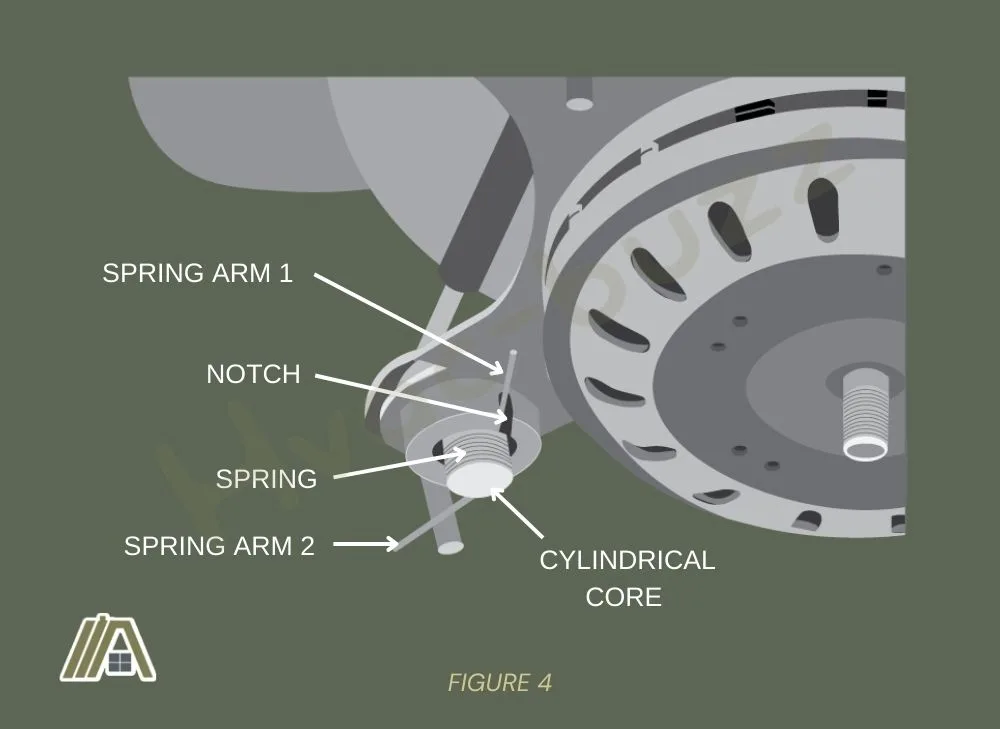
It consists of a cylindrical core with a wound spring, which has two extending arms perpendicular to the axis. Spring arm 1 sits in a notch on a donut-shaped disc that is positioned around the wound spring, keeping the spring in a fixed position.
Spring arm 2 is free to move in response to the movement of the post. When the post is pressed against the shelf (the blade is open), it also compresses spring arm 2, forcing this arm to move in a way that tightens the coils.
When the fan slows down, the centrifugal forces fall below the opposing spring forces. The force from the spring will press on the post, moving it away from the shelf, and causing the blade to retract.
It is the forces of the second spring arm that the fan has to overcome in order to extend the blades, and a certain speed is required to overcome these forces.
Benefits of Retractable Ceiling Fans
The hidden blades provide a low-profile appearance when the fan is not running, which can really open up a ceiling, particularly in a small room.
Retractable ceiling fans are a newer technology and a more complicated design. These two factors mean that the fan is more likely to be made to a higher standard, using higher-quality materials. This can improve the function and longevity of the fan.
These fans tend to be less noisy as the blades are lighter and the motors better than those of standard ceiling fans.
They are often remote-controlled, which is very convenient for a ceiling fan and not always a feature on more traditional AC models.
Drawbacks of Retractable Ceiling Fans
These ceiling fans are new to the market. As such, their availability and variety are nowhere near that of a non-retractable ceiling fan.
The blades are difficult to clean, often requiring at least two people for the process. This is because the blades overlap, and in order to unfurl them, you need to pull on two blades at once to prevent damage. The blades then need to be manually held open while they are cleaned.
For the blades to sit nicely over the fan assembly when in the retracted position, they have to curve quite severely and are shorter. This can narrow the column of air produced and also lessen overall airflow while the fan is operating.
Retractable ceiling fans may look simple once they are up and installed, but they can be quite a mission to set up. They are also often flush mount-only fans, which makes installation a little more tricky as you work right up against the ceiling.
For more details, check out my Retractable Ceiling Fan Pros and Cons article.
Sources
https://www.homedit.com/retractable-ceiling-fan/
https://designingidea.com/retractable-ceiling-fans-pros-and-cons/

